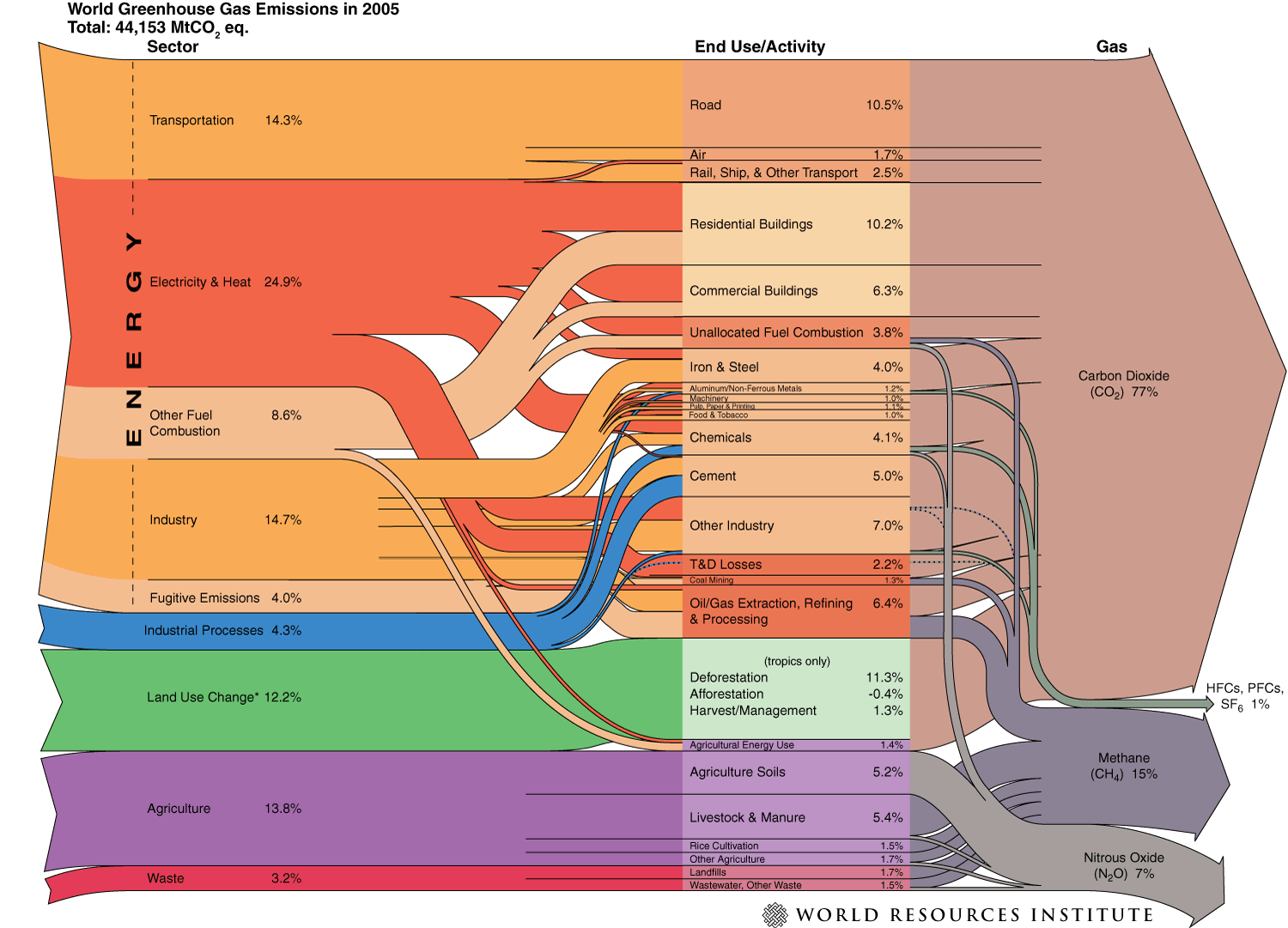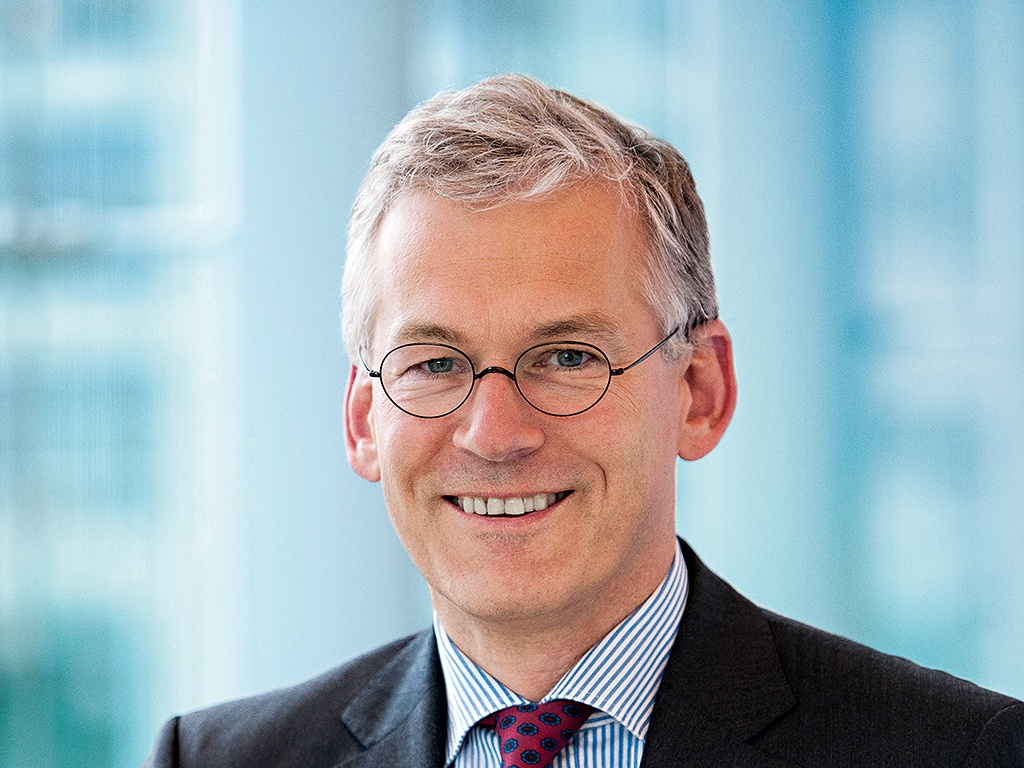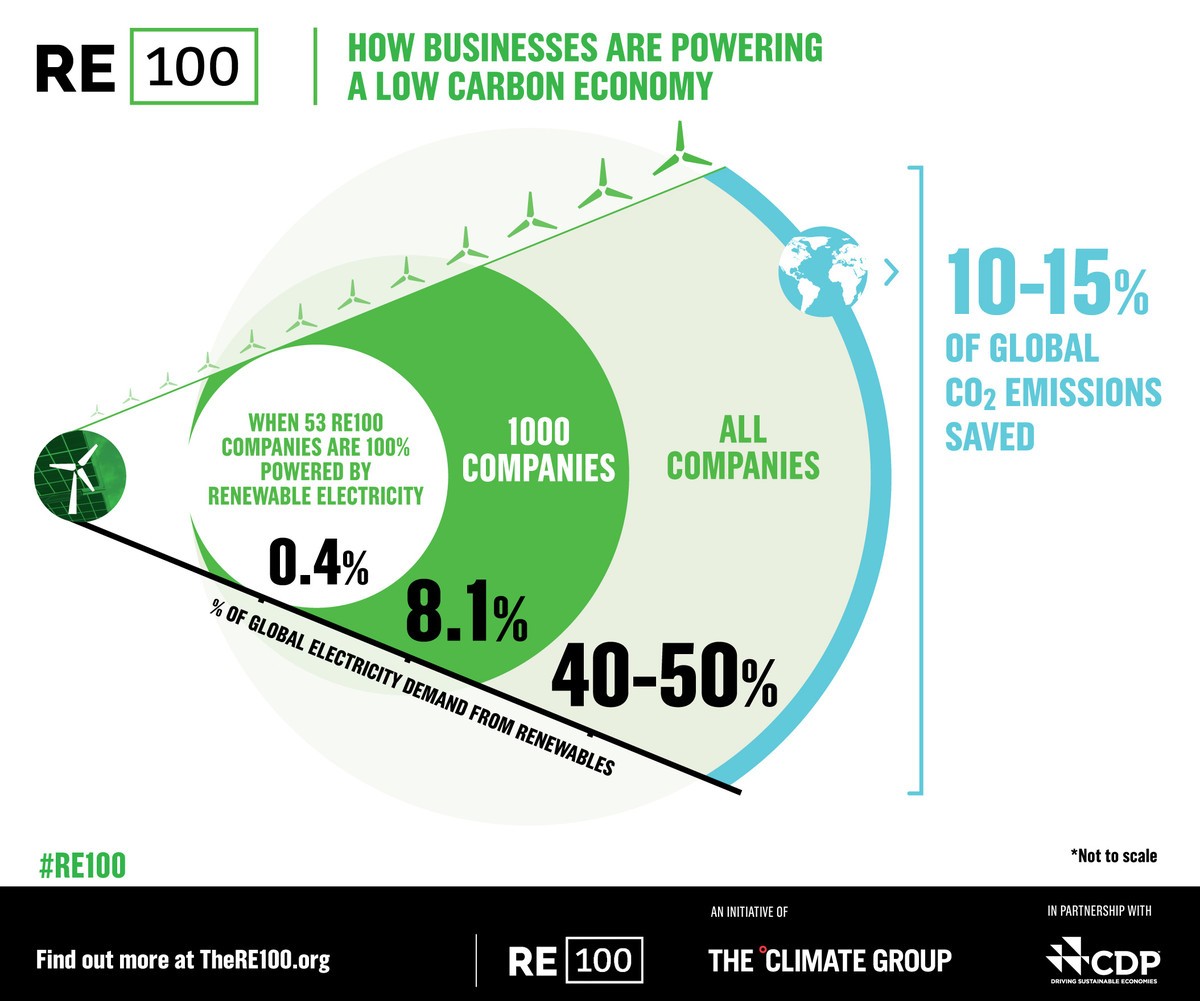Philips – Lighting The Way To Carbon Neutrality

How one large multinational is walking the talk in regards to its position on climate change.
Earth is getting warmer

Earth’s 2015 surface temperatures were the warmest since modern record keeping began in 1880, according to independent analyses by NASA and the National Oceanic and Atmospheric Administration (NOAA). The record-breaking year continues a long-term warming trend — 15 of the 16 warmest years on record have now occurred since 2001 (Figure 1). [1][2]
While there has been some speculation that El Niño was the main factor behind 2015’s record warmth, a recent attribution study found that El Niño provided only a little nudge to 2015. The continued buildup of greenhouse gases has kept the globe on a long term warming trend for more than a century. [3][4]
World Sources of Greenhouse Gas Emissions

Greenhouse gases (GHG) result, directly or indirectly, from almost every major human industry and activity (Figure 2). According to the World Resources Institute, in 2005, GHG Emissions resulting from energy used in Residential and Commercial Buildings alone represented 16.5% of worldwide emissions, rising from 15.3% in 2000. Total global emissions grew by 12.7% from 2000 to 2005, and this trend is expected to continue. [5][6]
Altogether, electricity consumed by all companies in the world is estimated to account for 10 to 15% out total global emissions. Therefore companies play a significant role in reducing the world’s overall carbon footprint, and more companies should see this as an opportunity and an obligation towards the communities they serve. [8]
Philips – Pledge to be Carbon Neutral by 2020

Philips is one company that is taking this role seriously. As Frans van Houten, CEO of Philips (Figure 3) declared for Carbon Disclosure Project (CDP), the current generation is the first to feel the impact of climate change; it is vital to act with urgency towards reducing GHG emissions. Philips sees its mission as driving meaningful innovation that improves people’s lives, while reducing its own environmental impact to help support a healthy planet for all.
As a leader in lighting and health technology, Philips believes that the greatest contribution they can make to addressing climate change is to lead by example. The company is committed to improving the lives of three billion people per year by 2025. It plans to achieve this by focusing on three core areas: products and solutions, operations and environmental impact across their extended supply chain.
At COP21 Philips committed to becoming carbon neutral by 2020. They have recently announced that by the end of 2016, their North American operations will be run on 100% renewable electricity. Working together with EDP Renewables North America, Philips will purchase 250,000 MWh of electricity per year over the next 15 years from the Hidalgo Wind Farm in McCook, Texas, an amount equivalent to the power used at Philips’ 133 sites supporting over 21,000 employees in the market.
By 2020, all of Philips’ electricity usage globally will be sourced from 100% renewable electricity. For the last four years, Philips has been recognized by CDP for its integrated climate change strategy which contributes to climate change mitigation, adaptation and transparency. [7]
RE100 and the LED Scale-Up Initiatives

Developed by The Climate Group in partnership with CDP, RE100 is a global initiative of influential businesses committed to using 100% renewable electricity. RE100 is working towards accelerating the transformation of the global energy market and aiding in the transition towards a low carbon economy. Philips is one of RE100’s 13 original partners.
Philips is also leveraging its expertise in LED lighting through the LED Scale-Up initiative. Lighting currently accounts for 19% of global electricity production and nearly 6% of global CO2 emissions, according to the International Energy Agency. 66% of current lighting is based on older, energy-inefficient technologies developed before 1970. A full switch to the latest LED lighting solutions provides 40% to 50% energy savings (Figure 4), and a significant reduction in CO2 emissions.
Philips Lighting (currently a standalone company) is pushing for this transition in the lighting market, because besides energy savings, it believes LED lighting solutions will help create better environments for people to live, work and play.
The ‘LED Revolution Booklet’, published by Philips ahead of the COP21 negotiations, reveals that a switch of all lighting sources to LEDs could provide a global reduction in carbon emissions of 1,400 megatons by 2030 and result in economic savings of EUR272 billion. Philips estimates that switching all outdoor lighting in particular to LEDs could stop 109 million tons of CO2 entering the atmosphere and save EUR21 billion globally by 2030. [8] [9] [10]
By being one of the first movers and fully committing to be carbon neutral, Philips has taken a decision that makes a lot of business sense, allowing it to further consolidate its reputation as an innovator and a leader in corporate social responsibility. From this position Philips can utilize its expertise to move the world forward to a new climate resilient future, while still driving value for its shareholders.
[796 words]
Cited Sources:
[1] Climate Central, “The 10 Hottest Years on Record”, Climate Central, original source NOAA/NCEI (29 January 2016), accessed 1 November 2016.
[2] Dwayne Brown, Michael Cabbage, Leslie McCarthy, “NASA, NOAA Analyses Reveal Record-Shattering Global Warm Temperatures in 2015”, Nasa.gov, (Jan. 20, 2016), accessed 1 November 2016.
[3] Patrick Lynch, “2016 Climate Trends Continue to Break Records”, Nasa.gov, (July 19, 2016), accessed 1 November 2016.
[4] NASA, “Examining the global impacts of the 2015 El Niño”, Nasa.gov, (December 15, 2016), accessed 1 November 2016.
[5] World Resources Institute, “World Greenhouse Gas Emissions in 2005”, pg. 2, wri.org, (July, 2009), accessed 1 November 2016.
[6] World Resources Institute, “Navigating the Numbers: Greenhouse Gas Data and International Climate Policy”, pg. 15, wri.org, (2005), accessed 1 November 2016.
[7] Carbon Disclosure Project, “Out of the starting blocks: Tracking progress on corporate climate action”, pg. 16, cdp.net, (October 2016), accessed 1 November 2016.
[8] The Climate Group, “RE100”, theclimategroup.org, accessed 1 November 2016.
[9] The Climate Group, “Philips member profile”, theclimategroup.org, accessed 1 November 2016.
[10] Philips, “The LED lighting revolution Stimulating socio-economic progress in the 21st century – December 2015”, Philips.com, (December 2015), accessed 1 November 2016.
Images
[Featured image] http://www.eternallycreative.com/wp-content/uploads/2016/01/Meydan-Bridge.jpg
[Figure 1] http://assets.climatecentral.org/images/uploads/gallery/2016GlobalNumbers_TopTenYearsUpdate.jpg
[Figure 2] http://www.wri.org/sites/default/files/world_ghg_flow_chart_2005.png
[Figure 3] http://www.europeanceo.com/wp-content/uploads/sites/4/2015/03/Fran%C3%A7ois-van-Houten.jpg



I see a clear conflict of interest in that specific case. How should I perceive Philips’s message as this is a company whose core business is to sell lightbulbs… and they are basically recommending that everyone purchases new lightbulbs… Do they actually offer a solution to recycle the old lightbulbs? In 5 years when after they invent a new generation of lightbulbs, will they recommend that everyone changes their lightbulbs again? Sustainability also means finding the right balance between updating appliances too often (leading to too much consumption) and never adopting the last innovations.
Thanks for push-back on this! In the adoption of new technologies, recycling is indeed a very important and challenging topic. I think the same can be said about the eventual move to electric (or other non-combustion engine solutions). Philips has been focusing on recycling and has been a promoter of a circular economy for some time. Apart from being a member of RE100, Philips is also a member of CE100 (Circular Economy 100), an alliance of 100 global corporations, emerging innovators and regions committed to working together to build circular economy capability.
Some more information can be found below:
http://www.philips.com/a-w/about/sustainability/sustainable-planet/circular-economy/recycle.html
http://www.philips.com/a-w/about/sustainability/sustainable-planet/circular-economy.html
http://www.lighting.philips.com/main/systems/system-areas/office-and-industry/offices/futureoffice/green-buildings/rounded-thinking-in-the-circular-economy.html
http://www.philips.com/a-w/about/sustainability/sustainable-planet/circular-economy/partnerships.html
Thanks for the article! I’m particularly interested in Figure 4 – the 1000 companies whose switch to being powered 100% by renewable energy can result in 8.1% of global carbon dioxide emissions saved. What are these 1000 companies? How is the 8.1% calculated? I ask because it seems like helping companies become more energy efficient may be a better business for Philips than focusing solely on LED lighting (which as you say later only saves 6% of global CO2 emissions in a best case scenario). Does Philips see itself as a B2B company rather than simply selling lighting solutions to consumers? Looking forward to your response!
Very interesting post! I did not realize how much Philips was doing with respect to sustainability and reducing greenhouse gas emissions. I was particularly impressed by the fact that Philips has committed to becoming carbon neutral by 2020, which seems like an aggressive timeline for a company of its size. Given that lighting contributes to 6% of global CO2 emissions, it is encouraging that Philips is leading the way with more efficient lighting options. However, I would have wanted to hear more about how Philips is actually working to change consumer behavior. At the end of the day, many consumers still prefer the more inefficient lighting options and I think one of the biggest hurdles is changing consumer decision-making to encourage the purchase of LED lights (or other options). Consumers could be a significant limiting factor for Philips’ ability to contribute to global energy savings.